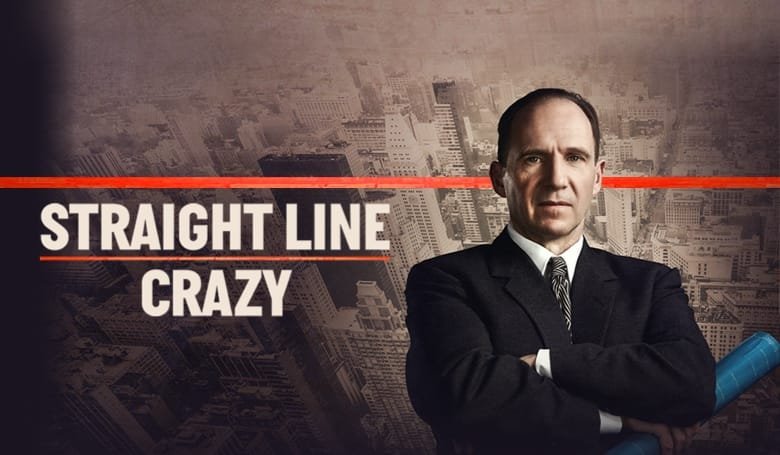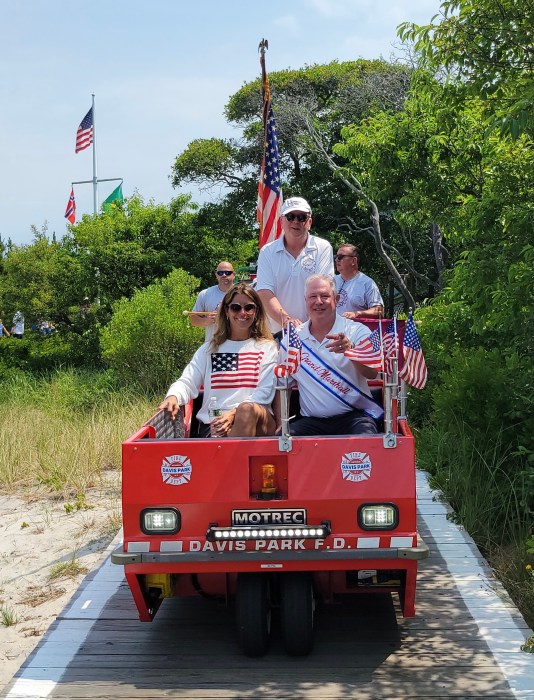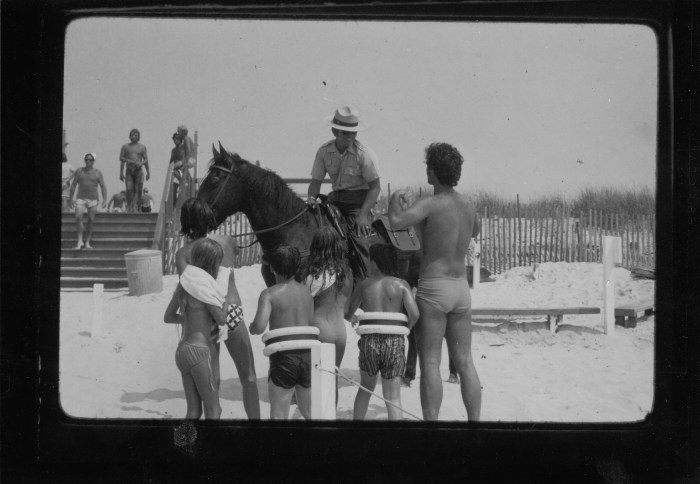
Its title: “Straight Line Crazy,” is a stage production presently showing Off-Broadway. Actor Ralph Fiennes plays Moses and “throughout,” says the review by Vinson Cunningham, “ably displays Moses’s faults—his stubbornness, his dishonesty, his bullying, his barely veiled prejudices against people of color and the poor.”
After managing to get me fired from my first job as a young journalist after I wrote about a fierce assault on civil rights protesters by his security force on the opening day of his 1964-1965 New York World Fair, I was interested in seeing this production.
Two years before, I had challenged his plan to build a four-lane highway on Fire Island.
The “straight line,” noted the review in The New Yorker, “is a reference to Moses’ compulsive tendency to draw straight lines on maps and then, implausibly, to gather the resources and marshal the bureaucratic will to make them physical facts as roadways.”
Much of the play involves Moses’s activities in New York City – his devastation of neighborhoods by highways he had constructed. Moses was not only crazy about straight lines, but cars as well, although he didn’t hold a driver’s license and let alone drive a car – Moses had a chauffeur.
Long Island references in the play include how “when Moses is just beginning to wield influence, and planning to open Jones Beach to the public” he made “it possible…to get there by the new Southern State Parkway.” But “not really possible,” Cunningham writes, “for the carless riffraff.” Add to that: by having bridges on Southern State built low, Moses sought to prevent people of color from New York City traveling by bus to Jones Beach.
Moses was a resident of Babylon Village, just across the Great South Bay from Fire Island, and that’s how I began tangling with him.
It was 1962 and I just got a job as a reporter at the Babylon Town Leader, a newspaper which for decades had criticized Moses’s projects. As Robert Caro relates in his award-winning biography of Moses, The Power Broker, Moses had the newspapers of New York City in his pocket. But the Leader was doing what the press is supposed to do: serve as a watchdog, a check on power.
The week I started at the Leader Moses had just announced his plan to build a four-lane highway on Fire Island. It would, claimed Moses, “anchor” Fire Island from storms – however at Water Island the highway would have been be wider than Fire Island. I was assigned to go to Fire Island to do an article about the impacts of the highway on the nature and communities of the 32-mile long roadless barrier beach. A walk in exquisite Sunken Forest made clear the environmental significance of Fire Island immediately. I learned about the magic of its 17 communities from Fire Islanders who loved this “barefoot paradise.” Among those on Fire Island I interviewed was TV journalist Charles Collingwood, playwright Reginald Rose, and writer Theodore White. I wrote an article that would be the first of many.
What an uphill battle! Hardly any elected officials would say or do anything in opposition to Moses. Meanwhile, we found out how the four-lane highway Moses built to the west, along Jones Beach, rather than being an “anchor,” needed to be regularly bolstered with sand pushed along its sides by bulldozers working furtively at night.
The first call I received the morning that first story was published came from Maurice Barbash, the environmentally focused builder of Dunewood on Fire Island, who, with his brother-in-law, attorney Irving Like, was to go on to organize the Citizens Committee for a Fire Island National Seashore.
The view was that Moses and his Fire Island highway plan couldn’t be stopped on the state level because of the enormous power of Moses in the state. He had run for governor of New York in 1934 and suffered a huge defeat, so he amassed power by running state commissions and authorities. If Fire Island was to be saved it would have to be through federal action. Also, the National Seashore initiative offered a very positive goal.
Interior Secretary Stewart Udall visited Fire Island and embraced the vision. I recall being with the area Seashore advocates with Udall on that day and how, in the Sunken Forest, he gazed upward in wonder at the foliage shaped by ocean winds. Just before he died in 2010, I met up again with Udall when he received a “Nuclear-Free Future Award” in New Mexico and decades later he recounted how impressed he was that day – and even though Fire Island was in close proximity to heavily populated New York City and the concept of a National Seashore was new, Fire Island well deserved becoming a National Seashore.
Conservation-minded Laurance Rockefeller, the brother of then Governor Nelson Rockefeller, who replaced Moses as chairman of the state Council of Parks in 1963, liked the designation of Fire Island as a National Seashore.
And Moses was furious. He confronted Rockefeller insisting he put a lid on his brother. If Rockefeller wouldn’t, Moses threatened to resign from his many commissions and authority posts. (This, according to a Leader source, a staffer at the Long Island State Park Commission which Moses chaired for four decades.) Somehow, Moses thought the state would fall apart without him. Rockefeller wouldn’t be steamrolled. So, Moses quit his government positions.
The bill establishing a Fire Island National Seashore was passed by Congress and signed by President Johnson in 1964. But the Leader was sold that year. I had also covered the early civil rights struggle on Long Island and went to the World’s Fair on its opening day to report on civil rights activists from Suffolk County protesting racism in hiring at it. Moses had stayed head of the private corporation which ran the World’s Fair. The attack by his security force on the protesters was intense.
The chain that had bought the Leader ran my article on what happened as a front-page story with the headline: “Jail Pavilion for Suffolk CORE.” But no longer was I protected by a Moses-critical management. I got a call the morning after the publication of my piece, which also featured my photos, to see the chain’s associate publisher, Wilson Stringer. He told me: “Mr. Moses called and is very upset with you. You’re fired.”
“Straight Line Crazy” is written by David Hare, and is playing at The Shed theatre. through December 18, 2022.































